Disclaimer: The video used on YouTube is a byproduct of producing our audio podcast. We post it merely as a convenience to those who prefer the YouTube format. Please subscribe using one of the links below if you’d prefer a superior audio experience.
Additional: YouTube has temporarily removed our thumbnail for violating its “sex and nudity” policy. Assuming this means the album cover despite this same cover being available on countless other videos on YouTube. An appeal has been filed and hopefully this will be resolved soon.
Subscribe at Apple Podcasts, Stitcher, Google Podcasts, Overcast, Pocket Casts, Anchor.fm, Breaker, PodBean, RadioPublic, Amazon Music, or search in your favorite podcatcher!
How To Support Our Show:
- Leave us a 5-Star Review on Apple Podcasts
- Buy Merch at Our Etsy Store!
- Become a Patron on Patreon
- Donate on Paypal (Donate one time or click “make this a monthly donation” box)
Welcoming Our Newest Patron(s):
- At the $5 Money Lender Tier
- Zwopper The Electric Alchemist
- Thank you guys for a great podcast! I’m a long time listener but late to the patron table. Keep up the great work and keep your pies eeled!
- //The Electric Alchemist
- Said he didn’t think it was fair that the $1 tier got all the coolest names.
- At the $1 Made Up Name Tier
- Hans Lilja
Thanks to Our Executive Level Patrons:
- The $20 “Shades of Deep Pockets” Tier
- Ryan M
- The $15 “Highball Shooter” Tier
- Alan Begg
- The Turn it up to $11 Tier
- Frank Theilgaard-Mortensen
- Clay Wombacher
- Mikkel Steen
- $10 “Some One Came” Tier
- Steve Seaborg (NameOnAnything.com, Alltheworldsastage.net) – Paypal
- Jeff Breis
- Gerald Kelly – Paypal
- Victor Campos
- Richard Fusey
Social Media Update:
- Deep Dive Podcast Network
- Apple Podcasts Review

Lead up to the Album:
- Jon Lord had been obsessed with performing rock music with an orchestra starting in the mid 60s in his previous band, The Artwoods.
- The Artwoods had almost used the New Jazz Orchestra on their 1966 debut album then later planned on working with a German conductor but neither materialized, the latter falling apart as The Artwoods broke up before it could happen.
- On “The Book of Taliesyn” Deep Purple brought in a string section for the song “Anthem.”
- In 1969 on their self-titled album Jon Lord got as close to his goal as he had yet gotten when they composed “April.” But “April” was broken up into band and string quartet parts, the two were not combined.
- In June of 1969 it was decided that they would book The Royal Albert Hall that September and put on a Concerto with the Royal Philharmonic. The only thing needed at that point was for Jon Lord to actually write it.
- As discussed on previous episodes the rest of the band were not 100% on board for this project but the performance went over very well.
- Lord: “It got us labelled as a group who’d jumped on the classical/rock bandwagon. It drew attention to us at a time when we needed it, but we weren’t expecting to be labelled as a group that plays with an orchestra. It caused a rift int he group. What they were afraid of, and what I hadn’t seen was happening, was that people weren’t sure what we were all about. They got frightened we’d get railroaded into playing hundred of Concertos. They thought I didn’t want to play rock & roll.
- At this point Jon Lord was largely seen as the leader of Deep Purple and this caused some resentment.
- This almost lead to Lord leaving the band but in the end management smoothed things out and Lord assured the others he was committed to Deep Purple.
- After the Concerto they did have to fulfill one last Concerto date in America at The Hollywood Bowl where the score was lost.
- Lord was also commissioned to write another rock and orchestral collaboration. The band reluctantly agreed but only if it was downplayed and that it would be the last time they would do any such thing.
- Lord got to work writing what would have a piece dedicated to each of the five members of Deep Purple, each focusing on the abilities of the individuals.
- The writing process happened very quickly while on tour with The Faces in America.
- They performed it once on September 17, 1970 with the Orchestra of the Light Music Society conducted by Malcolm Arnold.
- This time they were in a much better position than a year before with “Deep Purple In Rock” gaining traction and “Black Night” having some chart success.
- There was no publicity for this performance. The show was reviewed by two music magazines and it aired on British and Danish Radio shortly after the performance.
- The feeling by Lord was that this had taken The Concerto to the next level, bridging the gap a little more seamlessly than he’d done the previous year.
- The recording was shelved and not released until 1993. We’ll review that on a future episode.
- Lord said that he asked Keith Emerson to play on it and that Emerson agreed if it had time. Apparently he did not.
- Jon Lord did say in interviews following the concert, that he would like to record it but for now was focused on Deep Purple. Sometime was only six months later.
- After this Lord decided to record it again this time with Albert Lee, Tony Ashton, and Yvonne Elliman. This was released as the solo album we are about to discuss on this episode.
- The album was recorded at Abbey Road’s Studio One.
- The main orchestra was recorded at Abbey Road then the band convened at De Lane Lea studio to do the rock sections.
- Ian Gillan didn’t agree to do the recording which is why he brought in Elliman and Ashton. They were part of the same management company and recorded with Purple Records so they would have been around at the time. This is described as being convenient contractually but also Lord very much liked both singers.
- Blackmore, of course, was very against the project which is why Albert Lee was brought in.
- In Ian Gillan’s Biography “Child in Time” he describes Blackmore as going “berzerk” when he saw promotional posters for the concert. Blackmore said that the Concerto had become a “millstone around their necks.”
- In Jon’s own words: “The music on this album was originally written as a commission for the BBC and was first performed at the Festival Hall with Deep Purple and the Orchestra of the Light Music Society in September 1970, when it was broadcast live on British and Danish radio. I composed the Suite during the first six months of 1970, each movement being ‘built’ around the musical personalities of the members of Deep Purple. However, during the period between that concert and this recording the music grew away from the initial concept and became to my mind not so much a composition for ‘Group and Orchestra’ but, more simply, music for amplified instruments and orchestra. To this end we decided not to make it a Deep Purple project but to use specified soloists.
- “The title is an allusion to the main characteristic of people born under the sign Gemini– The Twins, my own birth sign.
- “Many thanks are due to all the soloists, the very fine London Symphony Orchestra, and to Mr. Malcolm Arnold, for his invaluable help.
- A special thank you to Martin, Ian and Roger.”
Personnel:
- Bass Guitar – Roger Glover
- Drums – Ian Paice
- Guitar – Albert Lee
- Piano, Organ – Jon Lord
- Vocals – Tony Ashton, Yvonne Elliman
Orchestra:
- Bass – Arthur Griffiths, Gordon Neal, John Cooper (4), John Duffy (4), Keith Marjoram, Pashanko Dimitroff, Robert Norris, Stuart Knussen
- Bassoon – Patrick Milne (2), Robert Bourton
- Cello – David Brown*, Douglas Cummings, Douglas Powrie, Graham Elliott, Jack Long, Kenneth Law, Maurice Meulien, Peter Muscant, Raymond Adams*, Thomas Storer
- Clarinet – Ronald Moore, Roy Jowitt
- Featuring – Albert Lee, Ian Paice, Jon Lord, Roger Glover, Tony Ashton, Yvonne Elliman
- Flute – Edward Beckett, Lowry Sanders
- Harp – Osian Ellis, Renata Scheffelstein*
- Horn – Anthony Chidell, David Cripps, David Gray (6), Peter Civil, Robert Noble
- Management [Orchestral Manager] – Terence Palmer (2)
- Music Librarian [Librarian] – Henry Greenwood (3)
- Oboe – Anthony Camden, David Woolley (2), Harold Lythell
- Orchestra – London Symphony Orchestra*
- Other [Orchestral Attendant] – Donald Liddington
- Percussion – James Holland, John Lees (2), Kevin Nutty, Raymond Northcott*
- Piano – Martin Reeves (2), Robert Nunn
- Timpani – Kurt Goedicke*
- Trombone – Frank Mathison, Peter Gane, Peter Goodwin
- Trumpet – Howard Snell, Norman Archibald, William Lang
- Tuba – John Fletcher (2)
- Viola – Alexander Taylor, Andrew Williams (10), William Jones*, Clarence Atkinson, David Chappell*, Eric Cuthbertson, George Robertson, Max Burwood, Michael Mitchell (3), Norris Bosworth, Paul Katz (3), William Krasnik, William Sumpton
- Violin [1st] – Basil Smart, Brian Thomas (4), Cyril Reuben (2), Dennis Gaines, Hans Geiger, Howard Ball, John Brown (2), John Georgiadis, Max Weber (2), Michael de Saulles*, Oliver Butterworth, Robert Retallick, Stanley Castle, Sydney Colter, Timothy Good*, Warwick Hill, William Martin (2)
- Violin [2nd] – Benedict Cruft*, David Measham, David Williams (8), Donald Stewart, Frederick Dyson, Ian McDonough, Julian Cummings, Martin Loveday, Reginald Larner, Samuel Artis, Simon Standage, Terence Morton, Thomas Cook, Thomas Swift
Technical:
- Composed By, Score [Scored By], Lyrics By – Jon Lord
- Conductor – Malcolm Arnold
- Engineer – Dave Stock
- Engineered the electric sections. Not 100% sure if they were done at Abbey Road or De Lane Lea.
- Engineer – Martin Birch
- Mixed the album at De Lane Lea.
- Engineer – Mike Gray
- Engineered the orchestral sections with Phil McDonald at Abbey Road.
- Engineer – Philip McDonald*
- Engineered the orchestral sections with Mike Gray at Abbey Road.
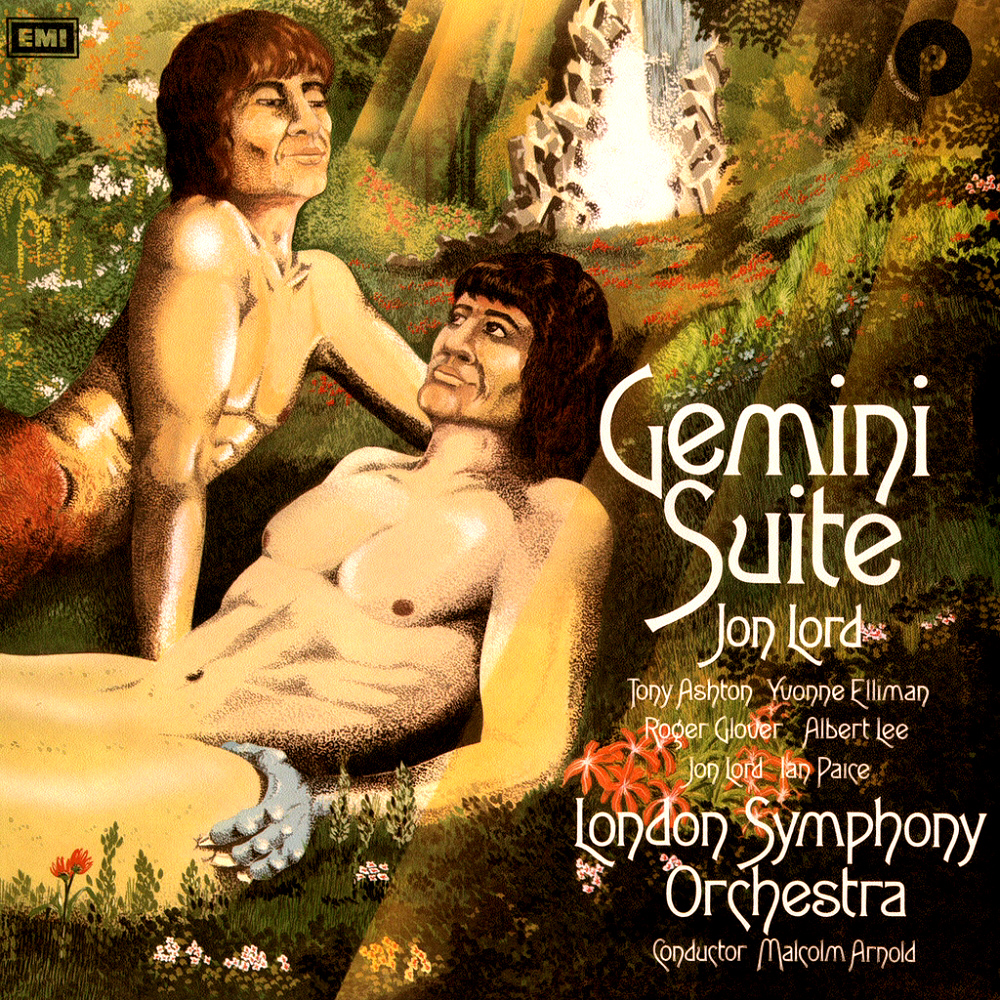
Album Art & Booklet Review
- Original 1971 Release:
- Design [Front Cover] – Jim Willis
- Design [Front Cover] – Westfore Design
- Lithography – TPS*
- Photography By – Jane Jackson (2)

- 1973 North American Reissue
- It’s unclear whether they didn’t like the British cover or if they thought it would be too controversial.
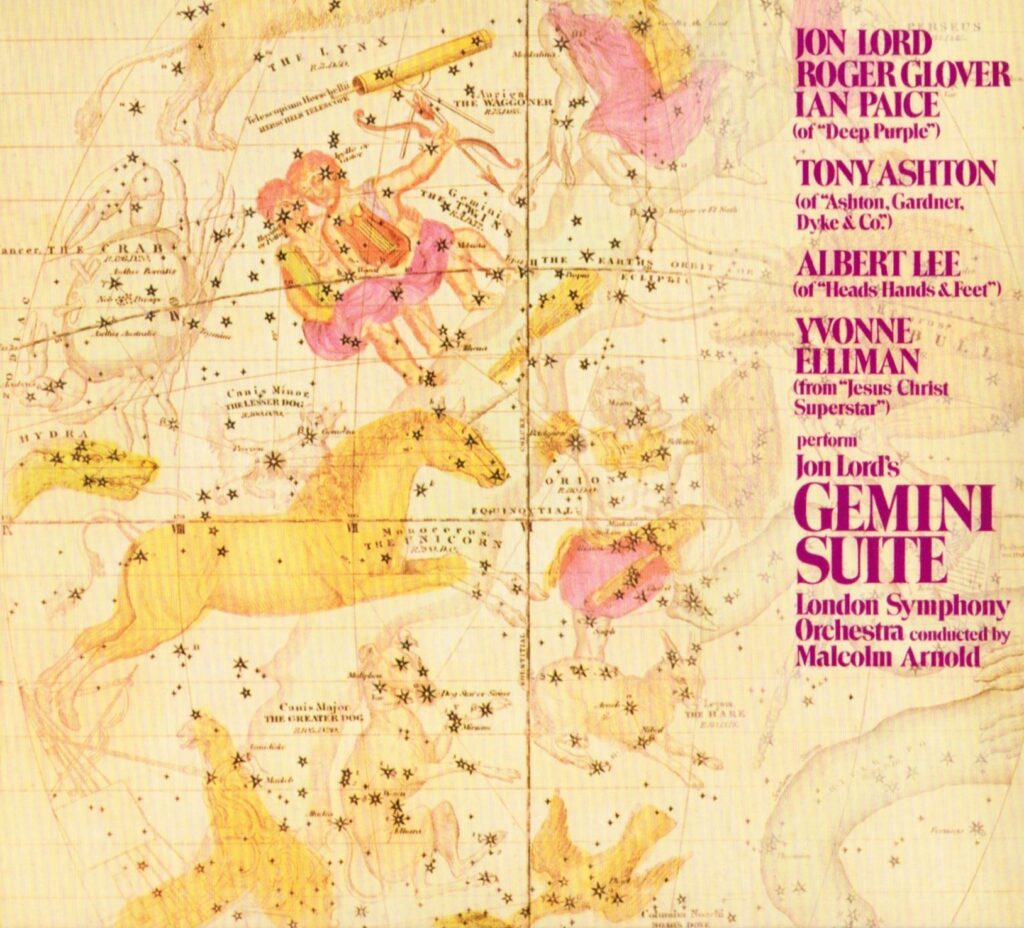
- 2008 Simon Robinson Remaster
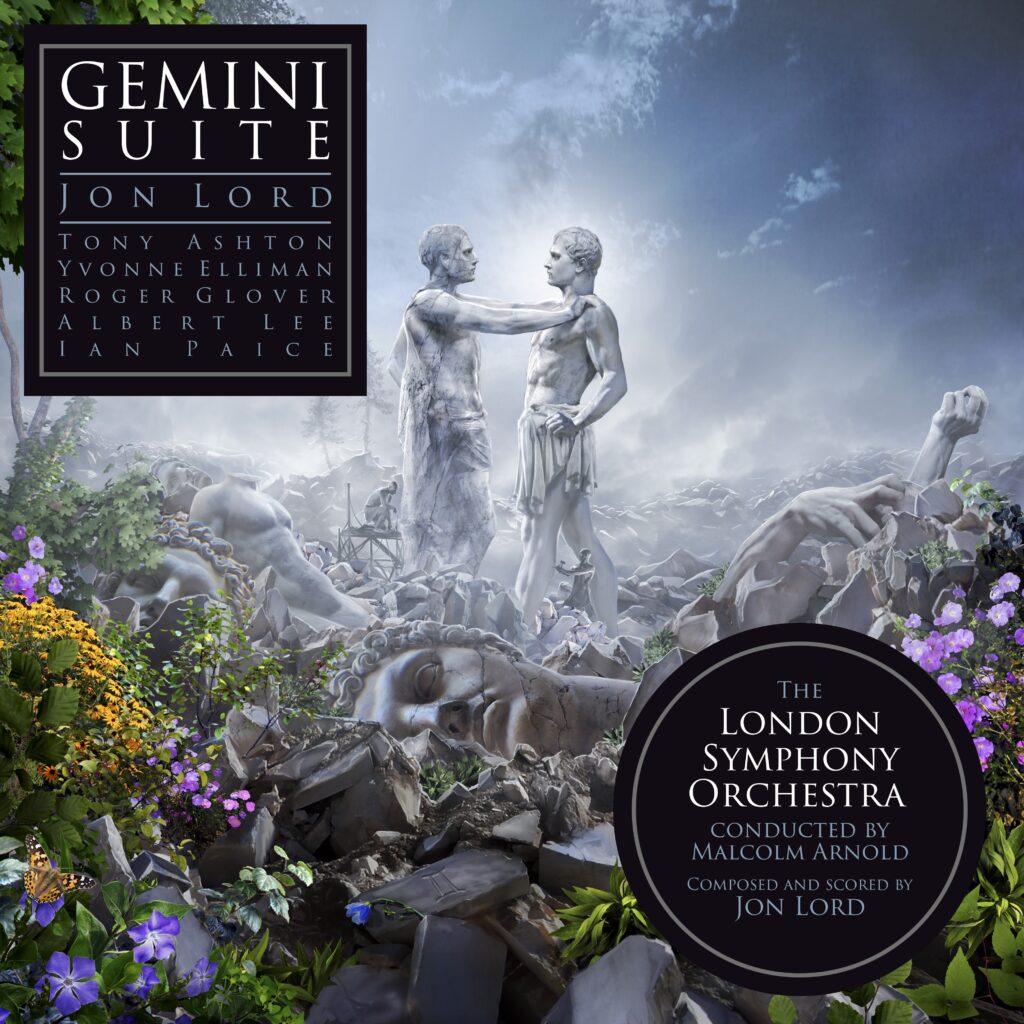
- 2019 Ear Music Rerelease
Made and Printed in Great Britain
Jon Lord courtesy of Harvest Records
Roger Glover courtesy of Harvest Records
Albert Lee courtesy of Island Records
Tony Ashton courtesy of Capitol Records
Ian Paice courtesy of Harvest Records
Thanks to Our Core Level Patrons:
- The Episode $6.66 Tier
- VACANT with Richard Fusey’s upgrade!
- The $6.65 “Almost Evil” Tier
- Kenny Wymore
- $5.99 The “Nice Price” Tier
- Fielding Fowler
- Dr. Gill Breese
- $5 “Money Lender” Tier
- Greg Sealby
- John Convery
- Arthur Smith
- German Heindl
- Adrian Hernandez
- Jesper Almén
- Oleksiy The Perfect Stranger Slyepukhov
- James North
- Mark Hodgetts
- Kev Roberts – Paypal
- Will Porter
- Zwopper The Electric Alchemist — NEW PATRON ALERT!!
- $3 “Nobody’s Perfect” Tier
- Peter Gardow
- Ian Desrosiers
- Mark Roback
- Anton Glaving
- Andrew Meyer
- Duncan Leask
- Stuart McCord
Album Tracks:
Side One:
- Guitar (Soloist — ALBERT LEE)
- Piano (Soloist — JON LORD)
- Jon Lord says that his solo was the worst during the live performance because “I just did it for myself. I re-wrote it for piano on the album.”
- Drums (Soloist — IAN PAICE)
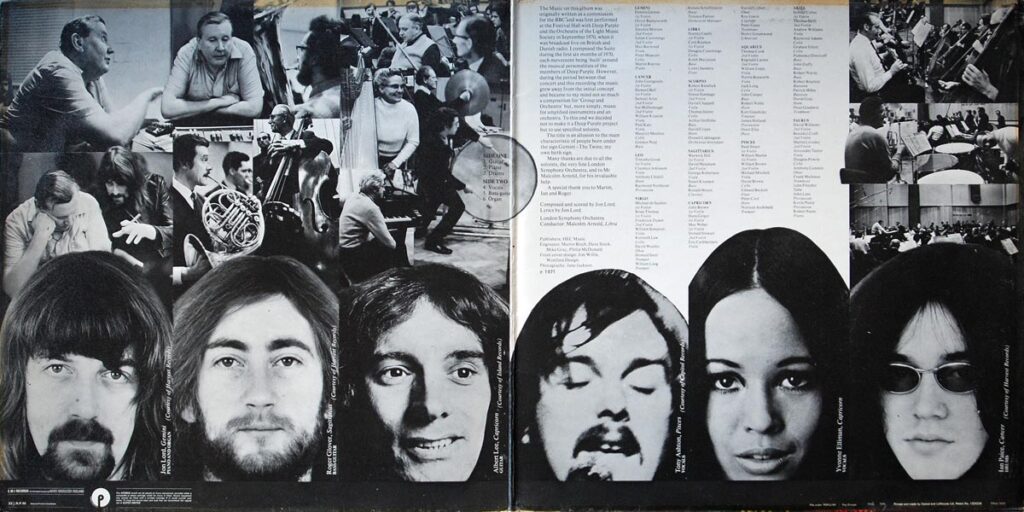
Side Two:
- Vocals (Soloist — TONY ASHTON & YVONNE ELLIMAN)
- Bass Guitar (Soloist — ROGER GLOVER)
- Organ (Soloist — JON LORD)
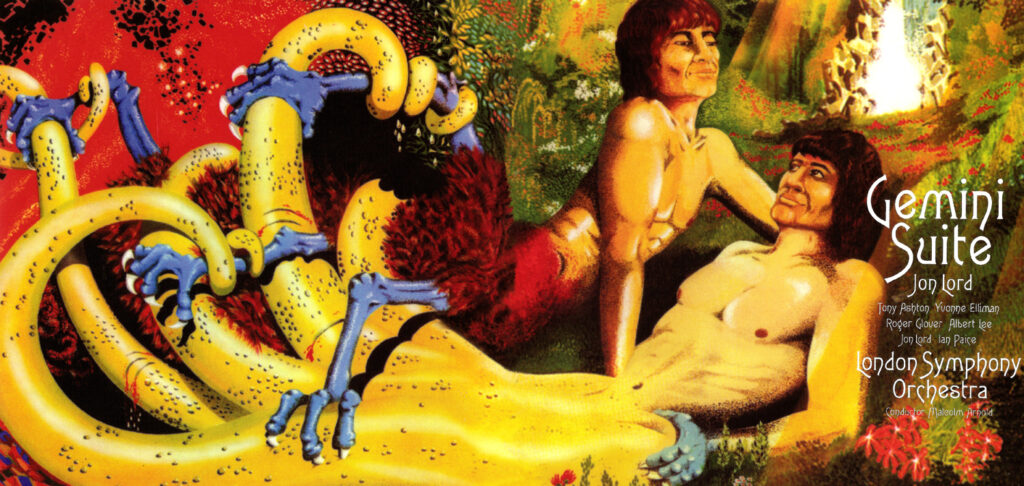
Thanks To Our Foundation Level Patrons:
- $1 Made Up Name Tier
- Ells Murders
- Spacey Noodles
- The “Unfastened” Leaky Mausoleum
- Michael Vader
- Stephen Sommerville The Concerto 1999 Fanatic
- Raphael Choury (Raff Kaff)
- Spike, The Rock Cat
- JJ Stannard
- Hans Lilja – NEW PATRON ALERT!!
Reception and Review
- Review in Melody Maker:
- “it‘s all turned out rather splendidly.”
- Review in Beat Instrumental:
- “Lord seems to have blended classical and rock in exactly the right proportions, where both disciplines act as compliments to each other rather than as opponents.
- Review in the Daily Mirror:
- Blow the bigots! Knickers to the knockers! When Deep Purple’s Jon Lord unveiled his Gemini Suite in concert last year, the moaners had a field day. Now it’s out on LP they are already at it again. To me this album is exciting, colourful, aggressive, beautiful, inventive, virile. What more could you want?”
- Review from Disc & Music Echo shortly after the album’s release:
- Getting the best of both Purples
- Jon Lord and Deep Purple seem to be finding their own musical levels, a compromise certain to draw the best from both. Purple lean far more on commercial rock, while Lord hides himself away writing large works like “Gemini Suite” (Purple TPSA7501, £2.05).
- This is perhaps a natural extension of his Concerto for Group and Orchestra, but more than that, it is a showcase for four excellent musicians, combined with one vast depth of Malcolm Arnold’s London Symphony Orchestra.
- It’s easy to dismiss works like this as pretentious nonsense, and equally easy for alleged classical music experts to dismiss it as diluted and unoriginal. Neither criticisms are fair nor justified. The main musical themes are well stated and play heavily on the emotions, alter the style of, say Elgar and Tschaikovsky.
- The opus is broken into six parts — for guitar (by the superb Albert Lee), piano (Lord, drums (Ian Paice, vocals (Yvonne Elliman and Tony Ashton), bass guitar (Roger Glover, also doing a very fine job) and organ (Lord again). This album is very easy to listen to and you don’t have to be hip to either heavy or classical music.
- Quality — excellent, Value — fine once you’re inside a rather revolting sleeve.
- On January 4th, 1972 it was performed again, this time in Germany at the Munich Concert Hall this time conducted by Eberhard Schoener. Everyone performed except for Yvonne Elliman who was busy with the stage version of Jesus Christ Superstar.
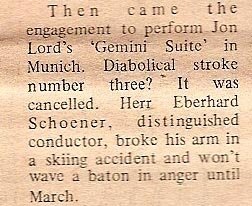
- Update: this show was actually cancelled as Eberhard Schoener broke his arm in a skiing accident.
- In October of 1973 Lord and Schoener again arranged another live performance of “The Gemini Suite. Afterward Lord was asked to do a new piece with Schoener which evolved into Windows.
For Further Information:
- Help from the archives of Jeff Breis
- 1993’s Deep Purple “The Gemini Suite” live CD release liner notes by Simon Robinson.
- https://musicbrainz.org/release/f63278a1-0092-48b6-a02c-56c37543d8db
- https://www.discogs.com/Jon-Lord-London-Symphony-Orchestra-Gemini-Suite/release/1062589
- Child in Time by Ian Gillan
- Liner notes to Gemini Suite re-release in 2008 by Smon Robinson.
- Jon Lord All Those Years Ago
Listener Mail/Comments
- Comments about the show? Things you’d like us to cover? We’d love to hear from you. Send us an email at info@deeppurplepodcast.com or @ us on Twitter, Facebook, or Instagram.
